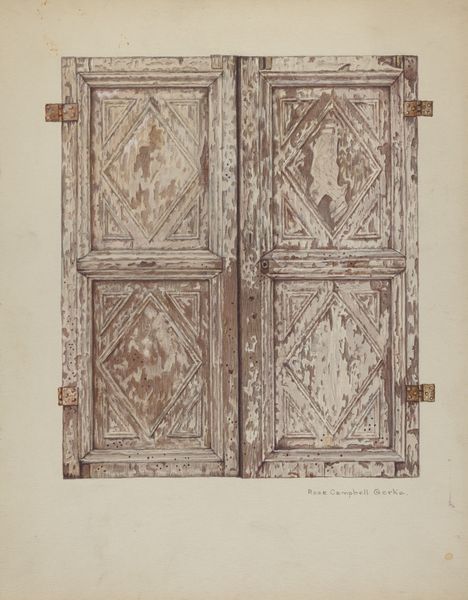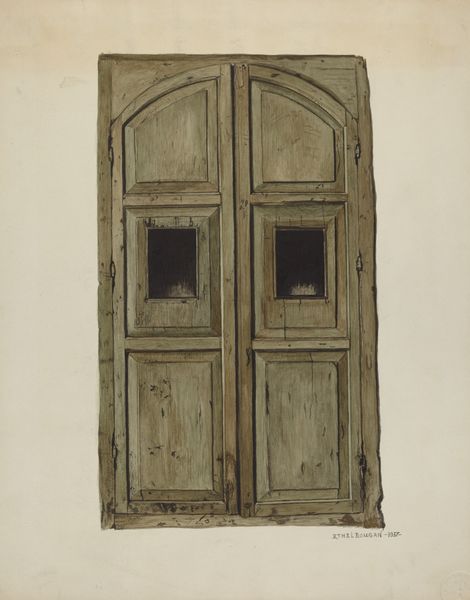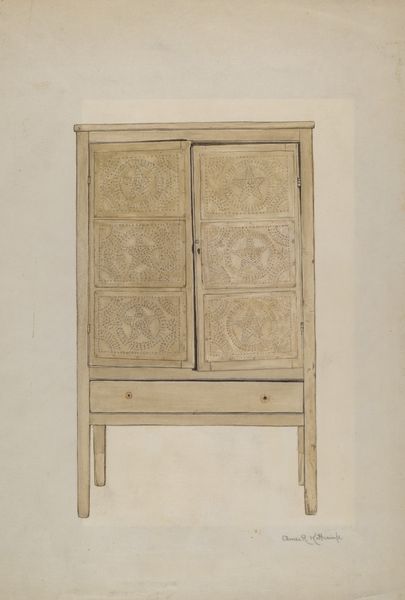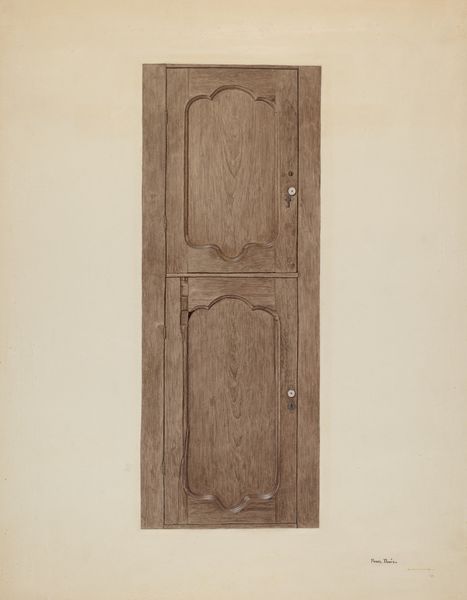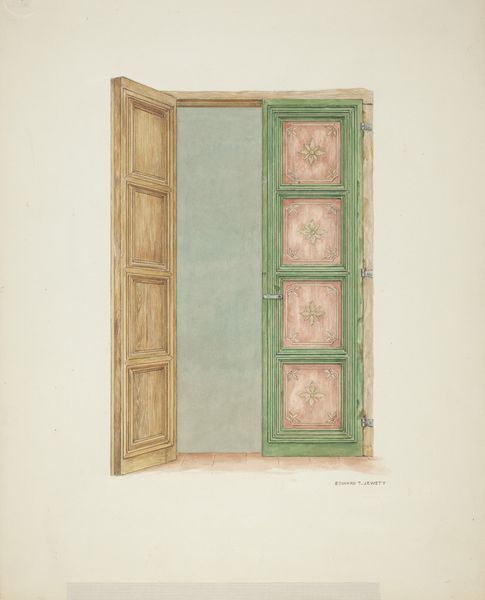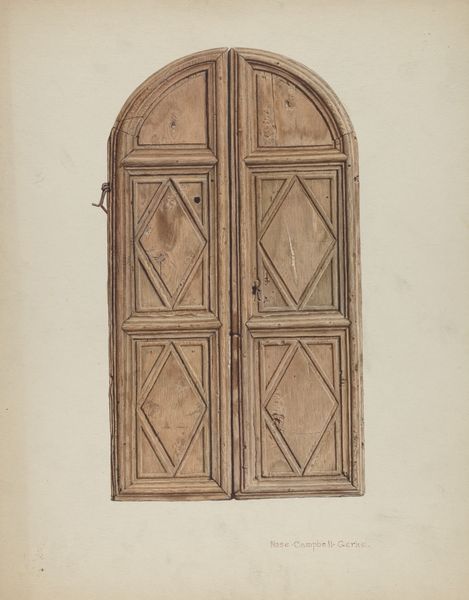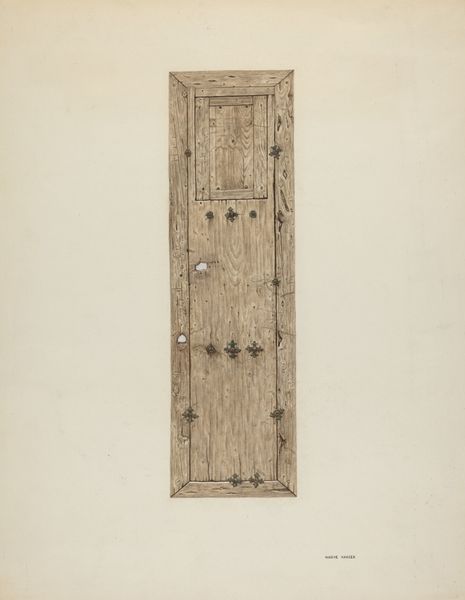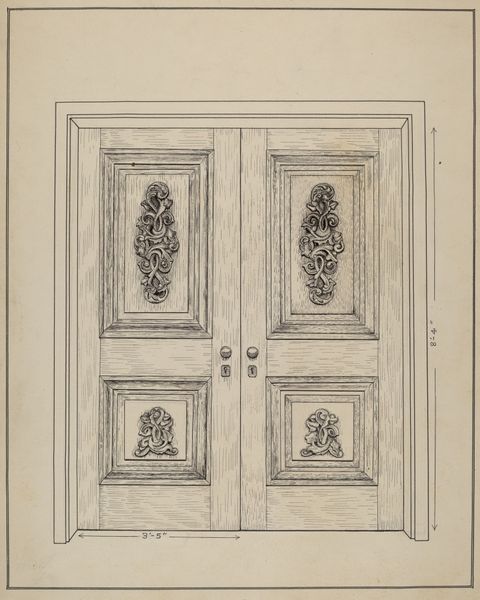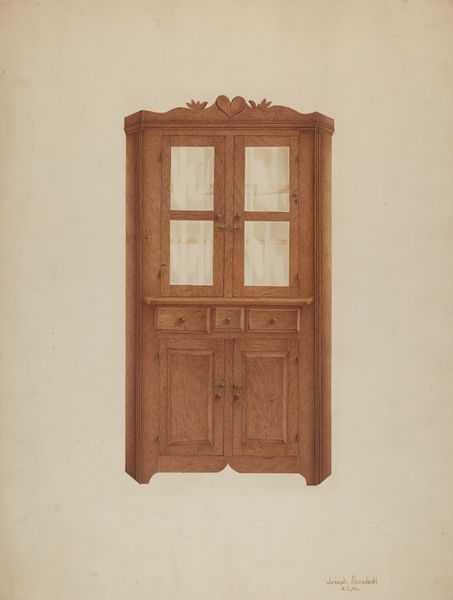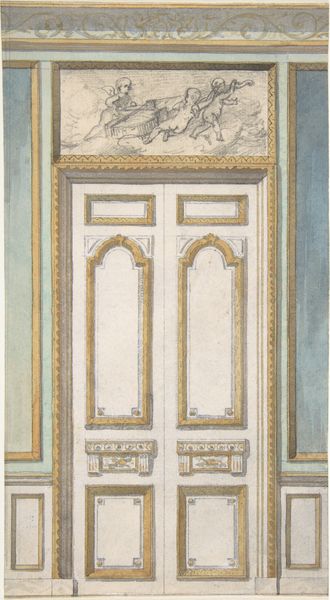
drawing, painting, watercolor, wood
#
drawing
#
water colours
#
painting
#
watercolor
#
wood
#
academic-art
#
watercolor
#
realism
Dimensions: overall: 45.5 x 34.5 cm (17 15/16 x 13 9/16 in.) Original IAD Object: 74"high; 2 5/8"thick; 35"wide
Copyright: National Gallery of Art: CC0 1.0
Curator: Standing before us is Angeline Starr's "Panel Door," a watercolor and pencil work created around 1939. It's a stunningly detailed depiction of exactly what the title suggests. Editor: Wow. It gives off this melancholic, yet weirdly hopeful vibe. You know, like an invitation, but to what, I'm not sure. The distressed paint is a story in itself. Curator: Indeed. Starr, active during the early to mid-20th century, often focused on overlooked aspects of domestic and architectural spaces, reflecting, perhaps, a desire to elevate the mundane. Doors, of course, are inherently symbolic; thresholds, portals between spaces, private and public. I think there's something to be said about its relationship with class, with accessibility... Or a lack thereof. Editor: See, for me, it's less about that access—and more about the feeling of…longing? The colour choices are interesting. That pale teal—is it supposed to evoke nostalgia? Almost like a faded memory? Curator: The use of color, in combination with the artistic style of realism, roots us in both history and lived experience. Watercolor allowed for delicate layers of representation to form, building up to a convincing illustration of an otherwise very familiar, architectural detail. The depiction of decay disrupts an otherwise clean composition... Editor: The peeling paint, that exposed wood in the corner... I mean, if that door could talk, right? All the conversations it has witnessed. Secrets, dramas. The fact that we can see wear and tear really gets my imagination going. What tales are there? Why was this artist so fascinated with that door? Curator: Starr's focus on realism offers, I think, a commentary on preservation and memory. We could ask: Whose memories are being preserved here? Whose histories get painted over? Editor: It’s a whisper of the past, urging you to maybe touch, to run your hand over the textures—even though you obviously can't touch it because it is art and one must maintain a distance... Curator: So much to unpack in the presentation of a seemingly "simple" painted panel. Editor: Absolutely! From the artist's intimate focus to how the paint speaks to its own personal history. Who knew a door could lead us down so many pathways of conversation, eh?
Comments
No comments
Be the first to comment and join the conversation on the ultimate creative platform.
